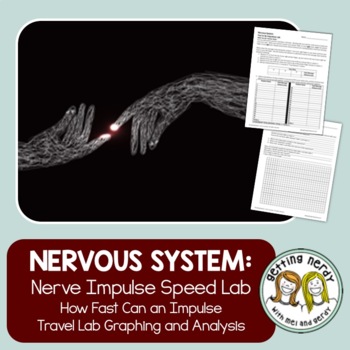Nervous System - Neuron Speed Lab
- Zip
What educators are saying
Description
How fast does a nerve impulse travel? Analyze the speed of a neuron's impulse as students apply their knowledge of the nervous system with this exciting lab in which they assemble as a group to determine just how long it takes for a message to travel. Data analysis and graphing are a big part of this lesson!
WHAT'S INCLUDED in this 1-2 DAY LAB:
• 7 NON-EDITABLE PDF pages
• Answer Key
• DIGITAL GOOGLE CLASSROOM links to all items listed above which can be easily converted to Microsoft School with directions provided or altered to fit your school’s personal learning management system
STUDENTS WILL:
• Use their knowledge of the nervous system to analyze how fast an impulse can move around the classroom
CHECK OUT OUR OTHER HUMAN BODY PRODUCTS :
• Human Body Systems - Interactive Notebook Activity Pack
• Human Body Systems Bundle - STEAM Science Centers / Lab Stations
• Human Body Systems - Word Wall
• Human Body Systems - Task Cards
• Integumentary system - Human Body "I Have . . . Who Has?" Game/Activity
SEE HOW THIS LESSON ALIGNS WITH THE NGSS, TEKS or GSE
Because we have created many of our own graphics or have purchased licenses to other graphics with permission, we cannot offer our resources in editable format unless otherwise stated.
TERMS OF USE (TOU):
All rights reserved by GETTING NERDY®️
• This product is to be used by the original purchaser only
• Intended for classroom and personal use only
• Copying for more than one teacher, classroom, department, school, or school system is prohibited
• This product may not be distributed or displayed digitally for public view
Failure to comply is a copyright infringement and a violation of the Digital Millennium Copyright Act (DMCA). Clipart and elements found in this PDF are copyrighted and cannot be extracted and used outside of this file without permission or license.
Impulse Lab © 2012 to present Getting Nerdy ®️ All Rights Reserved
www.gettingnerdyscience.com





